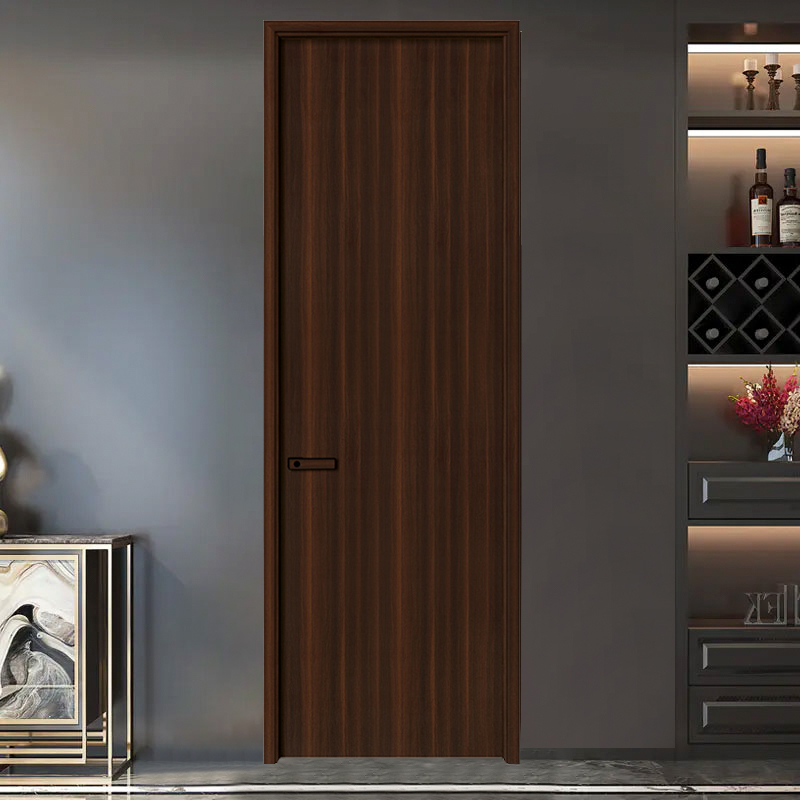Product Consultation
Your email address will not be published. Required fields are marked *

How does the surface finish of the Melamine Laminated Wooden Door resist scratches, stains?
Apr 22,2025
How does a Glass Wooden Door contribute to the overall energy efficiency of a building?
Apr 14,2025
How resistant is the PVC coating on a PVC MDF door to scratches, stains, and fading over time?
Apr 07,2025
MDF (Medium Density Fiberboard) doors can handle wear and tear in high-traffic areas reasonably well, but there are some important considerations to keep in mind:
Durability: MDF (Medium Density Fiberboard) is a composite wood product made from wood fibers bonded together with resin under high pressure and heat. This manufacturing process gives MDF its stability and uniformity. Unlike solid wood, which can expand, contract, and warp due to changes in humidity and temperature, MDF remains relatively stable. This stability is particularly beneficial in high-traffic areas where doors are frequently used, as it minimizes the risk of structural deformation. However, MDF's durability does have its limits, particularly in its ability to withstand high-impact forces, which might cause dents or chips more easily compared to hardwood doors.
Surface Vulnerability: The surface of MDF is smooth and devoid of the grain patterns found in natural wood. This smoothness allows for a high-quality, even finish, whether painted, veneered, or laminated. However, the uniform surface can also be more prone to showing scratches, dents, and chips, especially in high-traffic areas where the doors are subject to frequent contact with people, furniture, and other objects. Over time, these minor damages can accumulate, bring about a worn appearance. To combat this, high-traffic MDF doors should ideally be treated with a hard-wearing surface finish, such as a tough laminate or high-gloss paint, which can provide additional protection against everyday wear and tear.
Protective Finishes: Applying a durable finish to MDF doors is crucial for enhancing their resistance to wear and tear. High-quality paints, varnishes, and laminates create a protective layer that shields the underlying MDF from scratches, moisture, and other forms of damage. For high-traffic areas, finishes such as polyurethane varnish, melamine, or high-pressure laminates are recommended due to their exceptional durability. These finishes not only protect the surface but also enhance the door's aesthetic appeal. Regular reapplication of the protective finish, as part of routine maintenance, ensures that the MDF door continues to withstand heavy use over time.
Edge Damage: The edges of MDF doors are particularly vulnerable to damage because they are often the points of contact in high-traffic environments. Chipping and denting at the edges can occur due to repeated impact from feet, vacuum cleaners, furniture, and other objects. To mitigate edge damage, MDF doors can be fitted with edge banding made from materials such as PVC or hardwood veneer. These edge bands provide a tough, impact-resistant barrier that protects the more delicate MDF core. Protective trims can be installed around the door frame to further safeguard against edge damage, thereby prolonging the door's lifespan.
Moisture Sensitivity: MDF is more susceptible to moisture compared to solid wood and other engineered wood products. In high-traffic areas that also experience high moisture levels, such as bathrooms or kitchens, MDF doors are at risk of absorbing moisture, which can bring about swelling, warping, and eventual structural failure. To counteract this, it is essential to use moisture-resistant MDF (MR MDF) for doors in such environments. MR MDF is treated with special resins that enhance its resistance to moisture. All exposed surfaces and edges of MDF doors should be sealed with waterproof finishes or edge bands to prevent moisture ingress. Regular inspection and maintenance of these protective coatings are necessary to ensure they remain effective.
GA20-1 Walnut Modern Interior Flush Frame PVC Door

Your email address will not be published. Required fields are marked *











